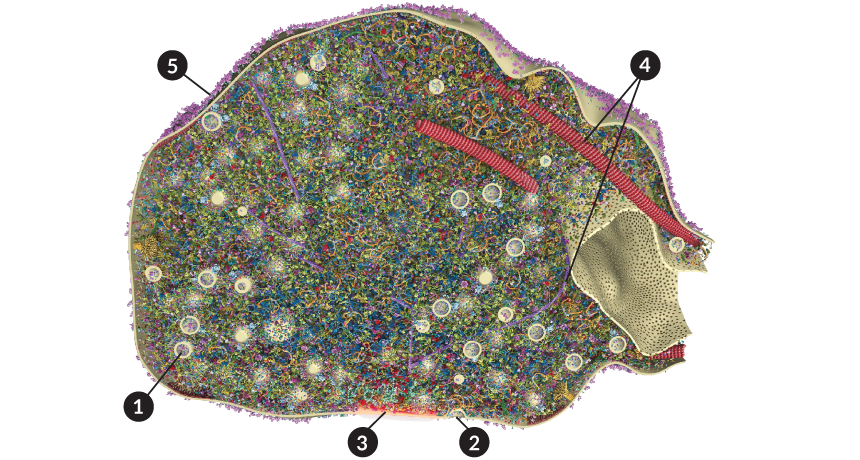Visualization offers view of a nerve cell’s dispatch center

A 3-D visualization of the structure at the tip of a rat nerve cell's axon, called the synaptic bouton, reveals the machinery that allows neurons to send messages.
All: B.G. Wilhelm et al/Science 2014